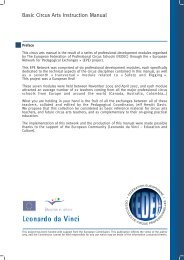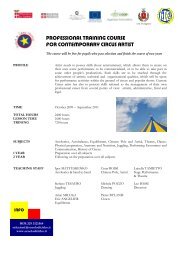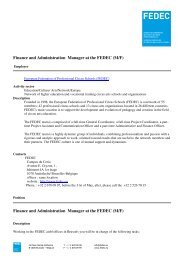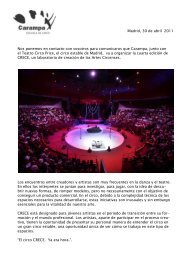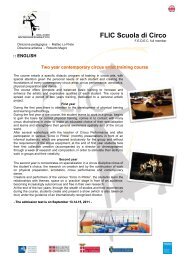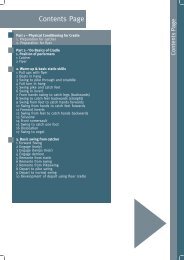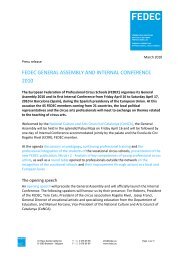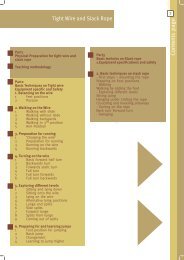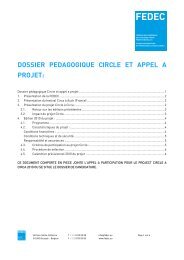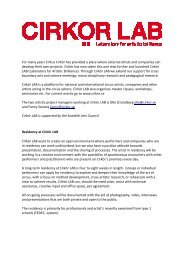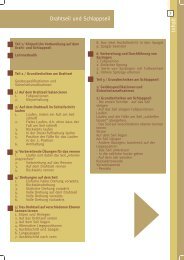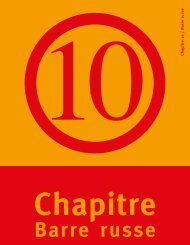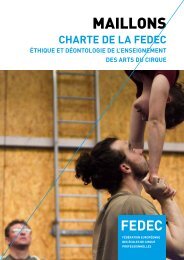CHAPITRE1 (TRAINING THEORY)b - Fedec
CHAPITRE1 (TRAINING THEORY)b - Fedec
CHAPITRE1 (TRAINING THEORY)b - Fedec
You also want an ePaper? Increase the reach of your titles
YUMPU automatically turns print PDFs into web optimized ePapers that Google loves.
6<br />
Manual for Acrobatics: Handstand, hand to hand, banquine<br />
Consequences<br />
- For the Flier, handstand training is practiced on sloped sticks in order to make it as real<br />
as possible.<br />
- When the angle of the wrists is moved, there is a loss of alignment and therefore a loss<br />
of stability in the contact. When the angle approaches 90° (fig 4), or at the other end of<br />
the scale towards 0º (fig 5), the position of the body of the Base and/or the Flier, may<br />
change as a result. (example closing the shoulder angle, will cause a pronounced hollowing<br />
of the body, and a forwards movement of the Flier’s shoulders) and therefore, creating a<br />
lack of efficiency to the balance. We often notice this type of error when the Base is<br />
pressing from bent arms to straight arms (example fig 4 to fig 5, the Base lifts by pushing<br />
with the wrists, there is a change of angle).<br />
fig 4 fig 5<br />
The position of the hand is the natural extension of the forearm (fig 6). Holding this<br />
position avoids sideways movement of the point of contact (fig 7 & 8).<br />
fig 6 fig 7 fig 8<br />
Part2/ Hand to Hand Balancing<br />
Consequences fig 7 (most frequent)<br />
- For the Base: an inwards tilt of the hands causes a slight flexion of the arms and a slight<br />
backward movement of the shoulders, therefore there is a hollowing of the back and a<br />
rotation of the contact.<br />
- For the Flier: an inwards tilt of the hands causes a forwards rotation of the shoulders.<br />
22



